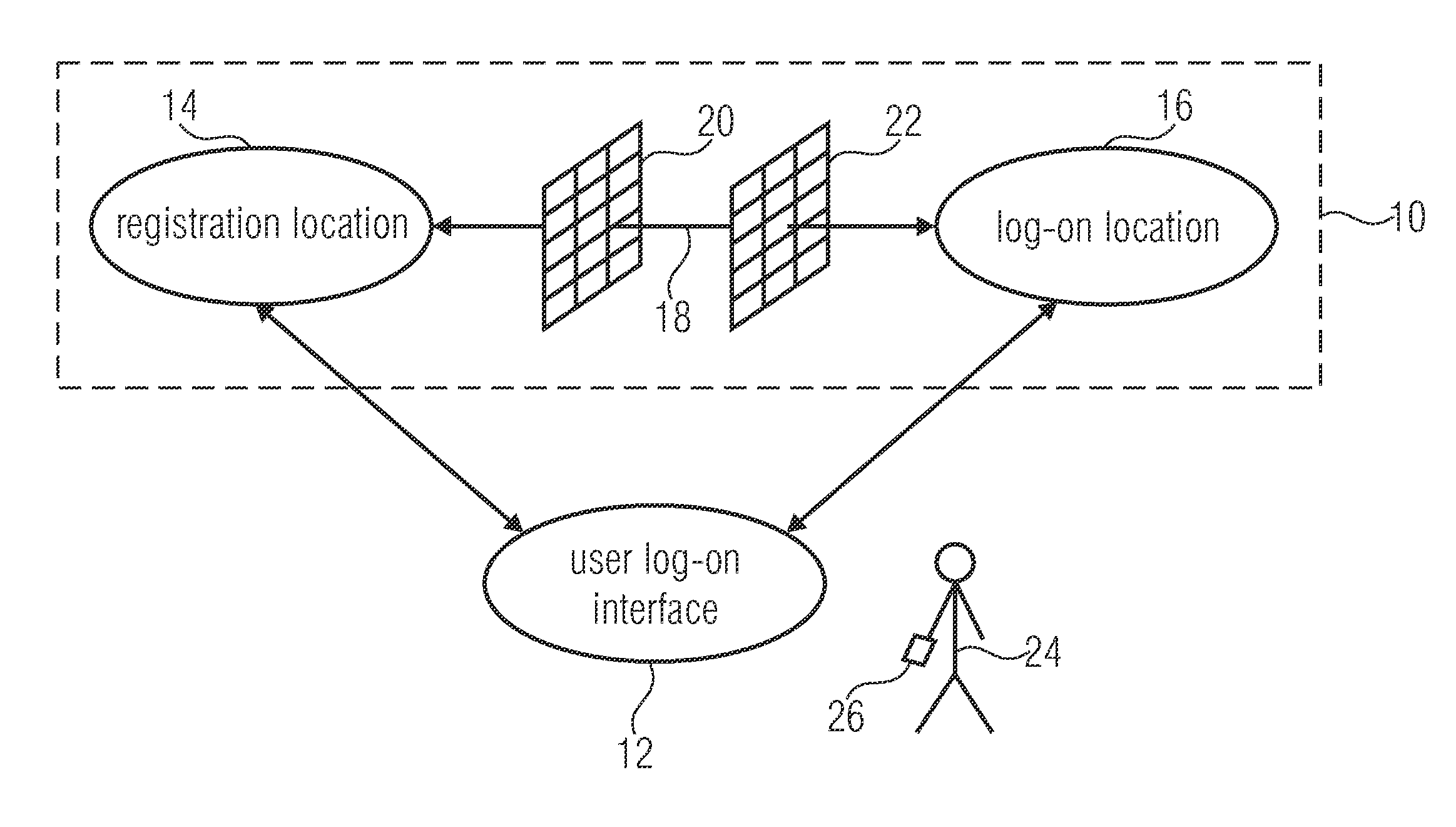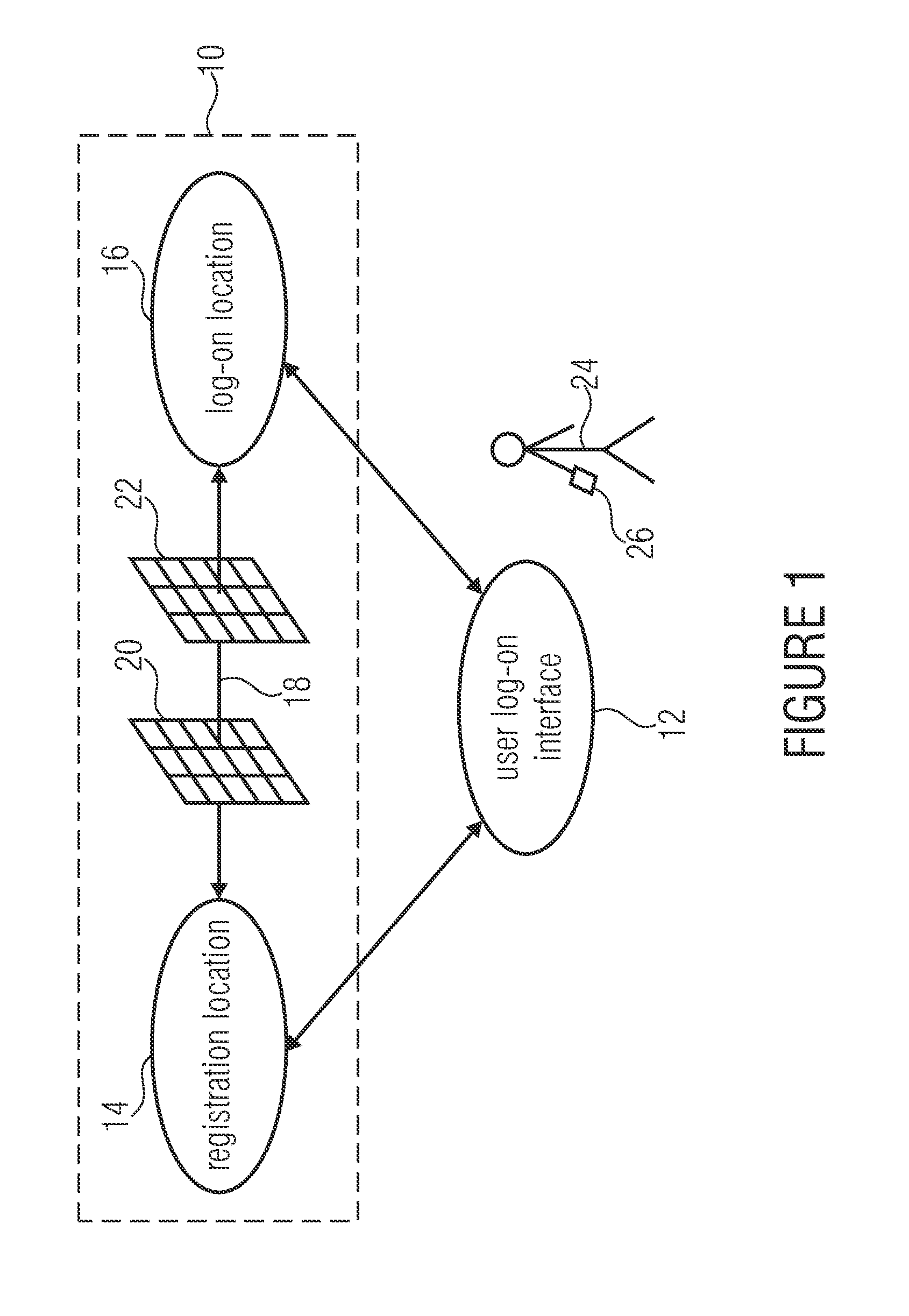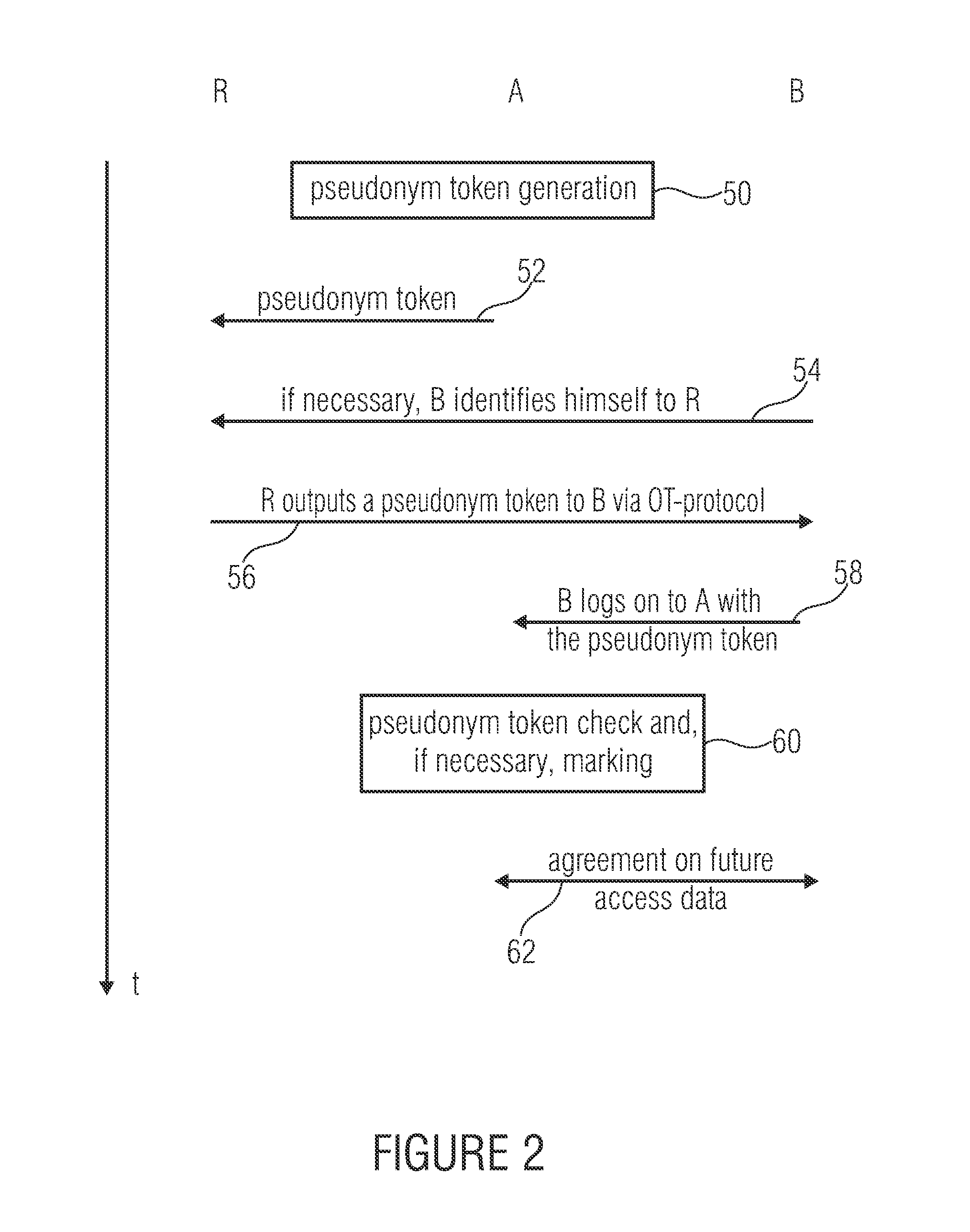Pseudonymized authentication
a pseudonymization and authentication technology, applied in the field of pseudonymization authentication of user entities, can solve the problems of increasing unauthorized use and criminal theft of such information, preventing not only conclusions to the real identity, but also to the differentiation of users, and significant problems or risks in the field of data protection
- Summary
- Abstract
- Description
- Claims
- Application Information
AI Technical Summary
Benefits of technology
Problems solved by technology
Method used
Image
Examples
application example
“Revenue Sharing Based on Limited Voting”
[0268]In the following, a specific case of application, the so-called Revenue Sharing is described and developed, which necessitates an authentication by the above protocol and is based on its pseudonymization for being able to differentiate between users and hence being able to allocate actions to individual IDs or pseudonyms. Insofar, this application case serves for verifying the functionality of the above described protocol.
[0269]A problem in the field of legal distribution systems is the just distribution of an existing financial contingent between artists. Normally, this is only possible by violating the privacy or by using DRM. In the described case of application, this is to be realized in a different manner: in a closed network (e.g. P2P), users have the option to download content provided by artists (or providers), on the other hand, users should also be able to evaluate the content with a limited number of votes. A given revenue is...
PUM
 Login to View More
Login to View More Abstract
Description
Claims
Application Information
 Login to View More
Login to View More - R&D
- Intellectual Property
- Life Sciences
- Materials
- Tech Scout
- Unparalleled Data Quality
- Higher Quality Content
- 60% Fewer Hallucinations
Browse by: Latest US Patents, China's latest patents, Technical Efficacy Thesaurus, Application Domain, Technology Topic, Popular Technical Reports.
© 2025 PatSnap. All rights reserved.Legal|Privacy policy|Modern Slavery Act Transparency Statement|Sitemap|About US| Contact US: help@patsnap.com



